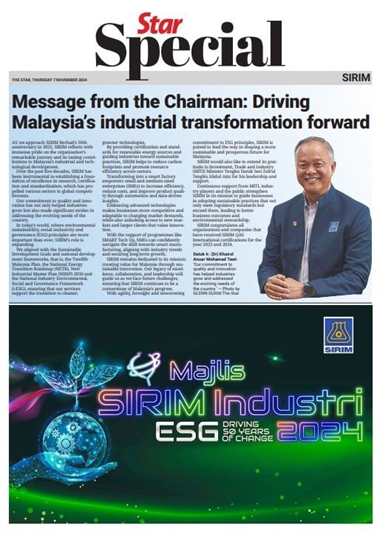
US trade and tariff policies are likely to have a widespread impact on global foreign direct investment (FDI) flows.
The interaction of trade and investment suggests that policies targeting trade imbalances will inevitably affect global investment conditions.
Trade tensions will heighten economic and market uncertainties, prompting investors to take a cautious stance as they reassess the risks associated with affected countries.
Multinationals could hesitate to invest or expand in countries facing US tariffs on concerns about export revenue, cost and profitability.
Derisking of global supply chains will become paramount as businesses restructure their operations to circumvent new trade barriers.
The United Nations Trade and Development’s global investment trend monitor reported that gross FDI inflows increased to US$1.37 trillion in the first nine months of 2024, recovering from two consecutive years of decline (US$1.36 trillion in 2023 and US$1.33 trillion in 2022).
During Trump’s first term of presidency (2017 to 2021), global FDI inflows had recorded a substantial decline of 16.4% per annum from 2017 to 2020.
FDI flows into Asia had increased by 6.7% per annum in 2022-2023, rising to US$621.1bil in 2023 and US$677.8bil in 2022 (1.1% per annum in 2017 to 2020), reflecting uneven global economic growth, concerns about ongoing geopolitical conflicts in some regions, and structural changes in investment focus and supply chains reconfiguration.
In the first three quarters of 2024, FDI inflows amounted to US$588bil.
More recently, geopolitical fragmentation and tactical shifts in the tussle between great powers, and trade conflicts started since Trump 1.0 have added to the headwinds, including friendshoring and near-shoring by companies investing in countries that are nearby geographically or more closely aligned politically with home markets.
It is encouraging to noted that within Asia, FDI inflows into South-East Asia increased by 8.2% per annum in 2022-2023 with the annual inflows remaining relatively stable between US$223.1bil in 2022 and US$226.3bil in 2023 (US$208.5bil in 2021).
By 2023, Asean’s share of global FDI soared to 17%, a leap from an average of 6% between 2006 and 2015.
FDI inflows into the region had expanded higher to US$235bil in the first three quarters of 2024.
The 2024 year-to-date data include the full year for Malaysia and Indonesia, the first three quarters for Vietnam and Thailand, and January to November for the Philippines.
Sustained FDI inflows into Asean were attributable to steady economic growth performance, deeper economic integration via multilateral partnerships, namely, the Regional Comprehensive Economic Partnership and Asean–China Free Trade Area, improved investment climate, numerous national investment policy measures to promote and facilitate FDI, as well as expanding opportunities in new emerging industries.
FDIs into Asean
The ongoing geopolitical conflicts, and geopolitical fragmentation as well as reconfiguration of supply chains for economic security are increasingly driving FDI inflows into Asean.
This is given its huge potential as the third most populated region with 677 million people and the fifth-largest economy in the world (US$3.8 trillion) as investors and companies seek to diversify their operations away from potential geopolitical hotspots.
Investors leverage Asean’s relative stability and access to multiple markets within the region, “derisking” their investments by spreading them across different countries in Asean amid global tensions.
We are cautiously optimistic about the prospects of FDI in 2025 and beyond. Historically, FDI is influenced by real gross domestic product (GDP) growth in the global economy.
While our baseline narrative for global growth to broadly persist running at 2.9% in 2025, it remains below the long-term average global economic growth of 3.8% in 2000-2019.
Global trade is estimated to grow by 3% in 2025 (3.7% in 2011 to 2019). `
Nevertheless, there are risks and rising challenges that will dim the prospects for global FDI.
With volatility, uncertainty, complexity, and ambiguity remaining high due to geostrategic fragmentation and escalation of tariff war risk, long-term investments are challenging, at least in the near term.
Trade wars or trade policy uncertainty generally have a negative impact on FDI or FDI diversion as they create uncertainty in the global economy, increase political and regulatory risks, disrupt supply chains, and can lead to companies relocating their investments to countries outside the trade conflicts.
Trade wars can be a double-edged sword for investment.
Efficiency seeking FDI will shy away from investing in countries that impose tariffs on foreign goods or those affected by the tariff escalation.
That said, efficiency seeking FDI may not move out of countries affected by trade tariffs if they have a stable regulatory environment and liberal trade policies.
Trade retaliation
Trade retaliation can hinder export-oriented FDIs in trade-conflicted countries while boosting barrier-hopping FDI into countries that impose tariffs as well as those less affected by the tariff escalations.
Higher tariffs set by governments are likely to increase trade costs and motivate tariff-jumping.
Under Trump 2.0, companies that rely on the US economy for their sales will seek to circumvent these trade barriers.
The imposition of universal tariffs could make it more attractive for companies to set up facilities in the United States, given the competitive advantage enjoyed in the home base.
We could see a surge of tariff jumping, where companies invest to get around duties.
This happened in the 1980s, which saw Japanese companies investing in the United States to get around trade restrictions targeting their exports.
The recent China-US trade war serves as a pertinent case study.
Literature reviews and studies showed that during Trump 1.0, US firms had avoided investment and relocated their supply chains by increasing their foreign suppliers and decreasing domestic suppliers, which potentially incurred a substantial strategic cost.
Studies on the effect of tariff actions in 2018 to 2019 predicted that the investment growth rate of listed US companies would be lowered by 1.9 percentage points by end-2020.
Other research studies also validated the diversion effect of trade conflicts on major trading partners of both China and the United States such as Taiwan, Mexico, the European Union and Vietnam.
Cases in point are massive divestment of export-oriented FDI from China and increased barrier-hopping investment in Mexico and South-East Asia.
South-East Asian economies may benefit from the trade conflict as they seek opportunities to replace Chinese goods in the US market as well as the US goods in the Chinese market.
The impact of trade tensions on cross-border investment projects varied considerably across industries.
When trade tensions arise between major economies, companies in industries heavily reliant on global value chains, include semiconductor manufacturing, automotive manufacturing, apparel and textiles, pharmaceuticals, and shipbuilding, are more likely to shift their investment towards countries in South-East Asia and Latin America.
Lower costs
These regions offer lower production costs and can serve as alternative manufacturing hubs to avoid the higher tariffs associated with the trade conflicts.
Countries identified as the most vulnerable to US tariffs must implement protective measures to mitigate the risk of escalating trade war while maintaining their appeal to foreign investors.
It is important to understand the country-specific potential to attract FDI diversion, which can offset negative spillover effects of the trade war.
These include stable political environment, favourable macroeconomic conditions, conducive investment ecosystem, and low exposure of strategic and geopolitical risks.
Regulator economic as well as financial risks perception in the investment environment will become attractive for FDI inflows.
While it is reckoned that uncertainties and risks are accepted as harbingers of trade tension in influencing FDI inflows, policies to cope with the impact will vary depending on the country’s economic resilience and industries strength as well as its integration in the regional and global value chains.
Redirection of investment
Investment diversion or relocation might threaten some economies’ heavy reliance on FDI to expand their industrial development path while at the same time they can benefit from the redirection of investment.
Hence, they need to be ready to attract new investors, especially the market-seeking FDI industries, which make regional integration an important element in their business strategies.
Special economic zones can offer companies more certainty during uncertain times, and can enhance their role in global trade.
In an increasingly complex global economy, industries and investors must adopt a diversification strategy to minimise their operational costs and protect against sudden policy changes.
Asean has the potential to attract more investors into emerging industries and sectors as well as greenfield investments linked to sustainable development.
They include high-tech manufacturing, semiconductor, artificial intelligence, digital economy, electric vehicle supply chains, renewable energy value chains and the development of supply chain networks.
Asean’s positive economic growth prospects, favourable investment climate, strengthening investment facilitation framework, regional integration, and advancing public-private partnerships will continue to attract more investors.
It can tap into intraregional investments and facilitate domestic businesses to expand their operations across the region.
Lee Heng Guie is the executive director of the Socio-Economic Research Centre. The views expressed here are the writer’s own.











































